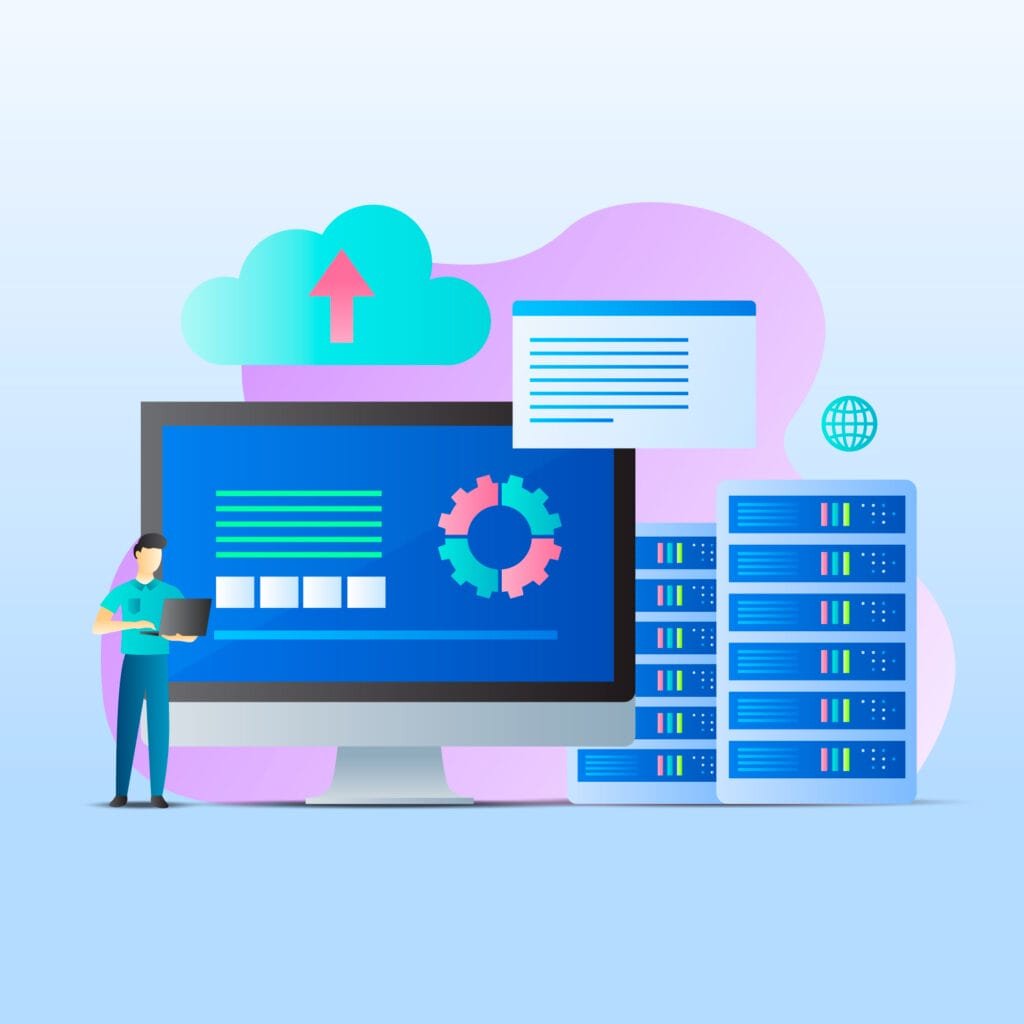Mastering the Art of Cloud-Secured Data Lifecycles: Your Complete Guide
Introduction to Cloud-Secured Data Lifecycles
In the current digital environment, where data is the ruler, it is critical to protect it at every stage of its existence. Although cloud computing has completely changed how data is managed and stored, it also presents new security risks for sensitive data. Safeguarding important data assets requires an understanding of the fundamentals of cloud secure data lifecycle.
Components of Cloud-Secured Data Lifecycles
Data Classification and Categorization
Understanding the data itself is the first step in the world of cloud secure data lifecycle. Not all data are created equal; some are more vital, sensitive, or private than others. Data classification is the process of grouping information according to its importance, sensitivity, and effect on the company. This classification facilitates the use of suitable security measures at various levels.
Importance of Data Classification
Recognizing the importance of data classification is similar to designing security protocols. Businesses can more effectively spend resources and implement security measures by determining which data requires the greatest level of protection and which can be more accessible.
Types of Data Classification
Categorizing data usually involves assigning labels to it, such as limited, private, internal use only, and public. The required level of protection and access control is then determined by each category. For example, although sensitive or private data requires strong encryption and strict access controls, public data may require less security.
Encryption Methods and Protocols
The fortress defending data from unwanted access is encryption. It involves encrypting data so that only individuals with the proper authorization may decrypt and access it. Encryption is essential to the cloud’s secure data lifecycle because it ensures data security when it’s in transit or at rest.
At Rest Encryption
Encryption makes sure that even if unauthorized users get to access data that is at rest—stored on servers or in databases—they will be unable to decrypt the data without the necessary key. To protect data while it is at rest, advanced encryption techniques like AES (Advanced Encryption Standard) are frequently used.
In Transit Encryption
Data transfer across networks or between systems is vulnerable to interception. In-transit encryption ensures that data stays encrypted and secure during transmission. It is frequently made possible by protocols like SSL/TLS (Secure Sockets Layer/Transport Layer Security).
Access Controls and Authentication Mechanisms
Essential components of the cloud secure data lifecycle include limiting who has access to data and confirming their identity. To prevent unwanted access and ensure only authorized users can interact with sensitive information, access controls, and authentication methods must be used in combination.
Role-Based Access Control (RBAC)
Users are granted permissions by RBAC according to their responsibilities in the company. Limiting access to only the data required for job functions, it reduces the possibility of sensitive information being accessed by unauthorized parties.
Multi-Factor Authentication (MFA)
By requiring users to submit several kinds of authentication to access data, MFA adds an extra layer of security. This can involve using a mix of security tokens, biometrics, and passwords to significantly reduce the chance of unwanted access—even if one of the factors is stolen.
Implementing Cloud-Secured Data Lifecycles

A systematic approach that includes choosing the best cloud service provider, putting in place reliable data management procedures, and integrating strict security measures at every stage of the data lifecycle is necessary to implement an efficient cloud-secured data lifecycle.
Choosing the Right Cloud Service Provider
The first step in making sure your data is secure in the cloud is choosing a reliable cloud service provider. Infrastructure capabilities, compliance certifications, and security features vary among providers. Considerable elements include:
Security Measures Offered
Evaluate the security measures that the cloud service company offers. Seek strong encryption techniques, data redundancy controls, access limits, and compliance certifications that meet the security requirements of your company.
Compliance and Certifications
Verify that the supplier you have selected adheres to the laws and industry standards that are relevant to your company. Certifications proving a dedication to data security and privacy include ISO 27001, SOC 2, and GDPR compliance.
Establishing Data Lifecycle Management Protocols
It is essential to establish clear protocols for managing data at every stage of its lifespan. This involves describing the processes involved in creating, storing, accessing, exchanging, and deleting data.
Data Creation and Storage
Set up rules for the creation, formatting, and storing of data. Data integrity and simplicity of management are ensured by using version control, metadata tagging, and uniform naming conventions.
Access Controls and Permissions
Establish access control guidelines by the classification of data. To prevent illegal access, implement role-based access controls (RBAC) and periodically evaluate and update user permissions.
Integrating Security Measures Across Lifecycle Stages
Security should be seamlessly integrated into every stage of the data lifecycle, from creation to disposal.
- Data Encryption Policies: Implement encryption measures for data that is in transit and at rest. Use strong encryption techniques and make sure keys are handled safely.
- Regular Security Audits and Updates: To find vulnerabilities, do routine security audits and assessments. Update systems with the most recent security patches and guidelines.
Challenges and Solutions in Cloud Data Security

Even while cloud computing has many advantages, data security becomes more difficult. To effectively address these difficulties, proactive measures and smart solutions are needed.
Addressing Compliance and Regulatory Issues
Challenge:
Adhering to various rules and regulations can provide a challenge, particularly when conducting business in disparate locations or industries. Keeping up with changing compliance regulations creates another level of difficulty.
Solution:
Create a solid compliance strategy that involves using automated compliance monitoring systems, conducting routine audits, and keeping up with regulatory changes. This procedure can be streamlined by using cloud service providers who maintain numerous compliance certifications.
Handling Data Breaches and Security Incidents
Challenge:
Security lapses and data breaches can have negative effects on a company’s reputation, finances, and data. It’s critical to identify these situations and act quickly to address them.
Solution:
To quickly detect and reduce security threats, put proactive monitoring tools and incident response procedures into practice. Educate staff members on cybersecurity best practices regularly to reduce human error that could result in breaches. An additional line of protection is added by using encryption, multi-factor authentication, and strict access limitations.
Evolving Security Measures for Changing Threats
- Challenge: Cybercriminals are always changing, and they use advanced methods to find weaknesses in systems. Conventional security measures can become antiquated or insufficient to counter new threats.
- Solution: Adopt an adaptable and proactive security strategy. Invest in modern threat detection tools that can quickly detect and neutralize new threats, such as machine learning algorithms and AI-based analytics. Invest in staff training and regularly update security procedures to stay ahead of emerging threats.
Advantages of Mastering Cloud-Secured Data Lifecycles
Organizations receive many significant benefits from effectively managing data security in the cloud.
Enhanced Data Protection and Confidentiality
Advantage:
Putting strong security safeguards in place at every phase of the data lifecycle ensures better defense against breaches, leaks, and illegal access. Confidentiality is promoted by encryption, access controls, and thorough data management procedures that protect sensitive information.
Improved Compliance Adherence and Risk Mitigation
Advantage:
Adherence to regulatory norms holds the greatest significance for businesses. Organizations may ensure compliance with different regulations by improving their understanding of cloud-secured data lifecycles. By taking this preemptive measure, the organization’s financial standing and reputation are protected from the possibility of non-compliance penalties.
Efficient Data Utilization and Management
Advantage:
Effective use and management of data assets are made possible by a structured approach to data lifecycles. Organizations can enhance operations related to storage, retrieval, and analysis by classifying and structuring data according to its significance and applicability. Better decision-making and operational efficiency are made possible by this.
Future Trends and Innovations in Cloud Data Security

Technological developments, changes in regulations, and the ever-evolving cyber threat are the factors driving the ever-changing environment of cloud data security. Remaining ahead of the curve when it comes to cloud data security requires anticipating future trends and breakthroughs.
Emerging Technologies in Data Encryption
- Trend: Advances in data encryption technology have the potential to completely transform cloud data security. For example, homomorphic encryption improves privacy without sacrificing functionality by enabling computation on encrypted data without the need for decryption.
- Impact: By offering more reliable encryption techniques, these developments will improve data security by protecting data even as it is being processed and analyzed.
Evolving Regulatory Landscapes and Their Impact
- Trend: Around the world, the legal frameworks controlling data security and privacy are changing. Higher standards for data privacy are being set by stricter laws like the California Consumer Privacy Act (CCPA) and the General Data Privacy Regulation (GDPR).
- Impact: To avoid fines and preserve customer confidence, businesses will need to adjust and invest in compliance measures that are in line with these requirements.
Predictions for the Future of Cloud Data Security
- Trend: For improved cloud data security, a convergence of technologies, such as blockchain, machine learning, and artificial intelligence (AI), is expected in the future.
- Impact: Threat detection systems driven by AI and ML will advance in sophistication and be able to anticipate and neutralize security risks before they arise. Data integrity will be improved by blockchain-based solutions, which will provide transparent and immutable data storage.
Conclusion
Acquiring knowledge in the cloud secure data lifecycle requires continuous observation and adjustment. In today’s data-driven world, prioritizing data security throughout its existence is not only necessary but also an operational benefit.
FAQs
1. What are the primary challenges in implementing cloud-secured data lifecycles?
Mastering the cloud secure data lifecycle involves navigating challenges such as data classification complexities, ensuring consistent encryption protocols, and establishing robust access controls across diverse cloud environments. Striking a balance between usability and security remains a central challenge.
2. How does encryption contribute to securing data in the cloud?
Encryption acts as a shield for data, rendering it unreadable to unauthorized users. It ensures that even if data is intercepted, it remains indecipherable without the proper decryption key. This vital security measure safeguards sensitive information both at rest and in transit across cloud platforms.
3. What role do compliance and regulations play in cloud data security?
Compliance and regulatory standards set the benchmark for data security practices. Adhering to these standards ensures that organizations handle data responsibly, protecting user privacy and fostering trust. Compliance measures, like GDPR or industry-specific regulations, necessitate stringent security protocols, shaping how data is managed in the cloud.
4. Why is it essential to choose the right cloud service provider for data security?
Selecting a cloud service provider aligned with robust security measures is pivotal for ensuring data integrity and confidentiality. Providers offering stringent encryption, access controls, compliance certifications, and proactive security measures are integral in safeguarding sensitive data stored on their platforms.
5. What are some emerging trends shaping the future of cloud data security?
The future of cloud data security is evolving with innovations like homomorphic encryption enabling secure processing, AI-driven threat detection enhancing proactive security measures, and blockchain-based solutions ensuring immutable data integrity. Moreover, the dynamic regulatory landscape is driving advancements in compliance-centric security practices.







